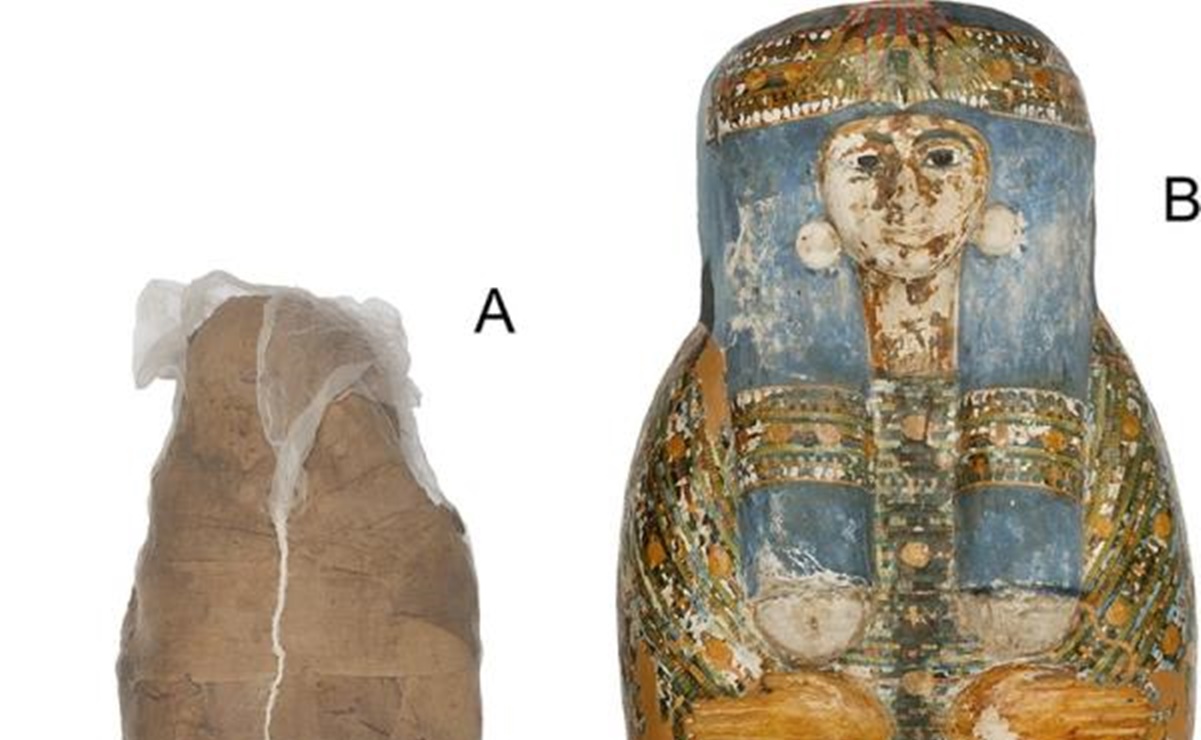A mummy in a shell? Discovering a rare funerary remedy

It is rare for a clay shell to wrap around a mummy Funerary therapy Specified in a Egyptian mummy, Which was discovered that the body predates the sarcophagus, indicating that it was placed there by nineteenth century merchants to sell as a complete set.
A study published today by Los One points to a new analysis of new technologies for the individual Mummified From the twentieth dynasty Egypt.
Although this treatment of colored clay crust has not been previously documented in the literature, the authors note that its frequency cannot yet be determined, and indicated that more radiological studies on other non-royal mummies could reveal more about this practice.
The mummy deposited at the Chow Chuck Wing Museum in Sydney had already undergone a computerized tomography (CT) scan in 1999, but the authors, led by Karen Blacka of Macquarie University in Sydney, repeated it with an updated technique.
Also read: A golden tongue mummy was found in Alexandria
The new dental and skeletal data determined that he was a young adult (26-35 years old) and that secondary bone characteristics (hip, jaw and skull bones) “clearly indicate” that she was a woman, the university explains.
The analyzes also revealed the extent and nature of the clay coat, which envelops the entire body and is placed in layers of linen.
Photo: Plos One / EFE
Studies of mummified corpses from the late New Kingdom to the Twenty-first Dynasty (1294-945 BC) have sometimes indicated the presence of a hard resinous shell protecting the body inside its shell, especially in the case of royal mummies of that era.
However, the muddy shell surrounding the body of a mummified woman inside tissue wrappings “is a new addition to our understanding of mummification in ancient Egypt,” according to the researchers.
Also read: A papyrus and 4-meter-tall tombs from 3,000 years ago are among the new discoveries in Egypt
The images revealed that the body was relatively damaged shortly after the initial embalming, and that a mud wrap and additional wraps had been placed in place to reunify and restore the body.
In addition to the practical purpose of the restoration, the authors believe that the veneer “gave those caring for the deceased the ability to emulate the distinct burial practices of painting the body with expensive imported resin veneer with cheaper and more widely available materials.”
But the study also sheds light on other details, which is that the date of the mummy and the coffin that contains it are not identical.
Both were bought as a group by Egyptologist and co-founder of the University of Sydney, Sir Charles Nicholson, during a trip to Egypt in 1856 and donated them to the educational center.
Also read: They found purple fabrics from the time of David and Solomon’s rule in Israel
The inscription on the sarcophagus identifies its owner as a woman with the title fan, and the icons date her to about 1000 BC.
However, the current analysis of mummification technique and radiocarbon dating of tissue samples of linen casings places the mummified body at the end of the New Kingdom (1200-1113 BC).
This means that the body is older than the coffin, indicating, according to the authors, that “local merchants in the nineteenth century placed an unrelated corpse in the coffin to sell as a whole group.”
fjb

“Bacon advocate. Certified creator. Twitteraholic. Tv junkie. Beer fanatic. Internet nerd. Passionate thinker. Reader.”




:quality(85)/cloudfront-us-east-1.images.arcpublishing.com/infobae/OF4NJDPGLBEYJAZ5XZMH3OIPJ4.jpg)



